After a few years of using my Manfrotto Befree Travel Tripod, a piece of equipment that had served me well and I had taken on numerous trips abroad, I decided it was time to invest in some lightweight and sturdy tripod legs that would be able to stand the test of time and help me improve as a photographer.
After much research and comparison between various brands, I eventually decided upon the FLM CP30 L4 II and I thought it would be helpful, for those in a similar situation of deciding on a new purchase, to provide a review on my experience and explain a bit on why I went with this tripod.
One of the main reasons for writing up this review is due to the lack of product reviews out there on FLM and their range of products. They don’t do a great deal of marketing and is certainly one of those brands that build their success on word of mouth and on being the ‘best-kept secret’. If you’re in the market for a new tripod and you’re not quite finding the right one from the larger brands, why not take a look at the FLM CP30 L4 II.
Background
As a bit of background, I purchased my first (decent) tripod in 2017 and roughly a year after purchasing my Canon 80D, growing my interest in photography. I particularly remember this time as I was just about to make a trip to Venice and like most photographers that visit Venice, I was after the classic shot of the view from Doge’s Palace with the gondolas bobbing in the foreground. Obviously, I would need a tripod to get the shot… and that’s where the Manfrotto Befree came in.
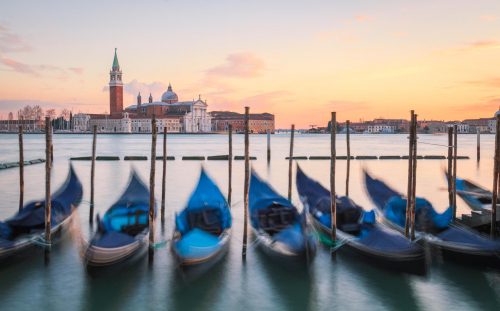
It was probably the first time that I thought of how I could use a tripod to creative effect and I since learnt of the other benefits of using one: sharper images, more control, improved dynamic range of scene and easier setting of compositions. So this was the start for me and it may be the same for you.
The Manfrotto Befree had everything I was looking for at the time. It was lightweight, I could fold it down into my hand luggage, it was relatively stable and quite frankly it just did the job I wanted it to at a decent price.
As I got more and more into landscape photography and made other investments to my gear setup, I started to come across some of the limitations with a tripod such as this. I wasn’t travelling as much so it being lightweight and compact was no longer the most important factor and I really needed something more stable, especially in high winds and on uneven surfaces.
I was also pretty frustrated by the height of the Manfrotto and I was constantly bending over to look through the viewfinder (not too bad for occasional use, but for frequent use it is quite annoying).
The final reason was simply the build quality. After seeing some reviews and videos of more expensive tripods, you start to realise a little bit of what you’re missing. After all, for most landscape photographers, the tripod goes with you on most trips and you end up interacting with the tripod arguably more than the camera itself. So it’s always nice to use something that is built well and built to last.
New Tripod Criteria
So I knew I wanted a new tripod but the next question was around what characteristics/features would I need? For those yet to go into the black hole of researching tripods, you’d be surprised by the variety and breadth out there so narrowing it down as best you can help a lot.
Of course, everyone’s criteria will be slightly different and personal preference has a big part to play so I’ll just explain the criteria I was looking for, for my needs:
1. No centre column
Personally, I don’t really like using them. On my old Manfrotto, I hardly extended it and I found you lost so much rigidity when it was extended. After a bit of research, this looks to be true, a centre column does impact the sturdiness and stability. I also didn’t want to be restricted with how low to the ground I could get, the centre column sometimes gets in the way with this.
2. Fairly lightweight
I didn’t need it to be super lightweight but I wanted something you could carry around all day without much hassle. At a certain price point, you’ll get carbon fibre legs and this goes a long way in reducing the overall weight whilst keeping the tripod strong.
3. Decent height extension
I wanted a fairly tall tripod purely to keep my options open when I’m on location. This also comes in handy for woodland photography as it allows you to reach a height to reduce the amount of sky in your frame. I’m just under 6 foot so something comfortable at eye level is also important.
4. Built to last
As the saying goes… buy nice or buy twice. Ultimately you get what you pay for but I wanted something that would last me a long time and be able to withstand salt, sand, rain, snow etc. Many people will happily spend £3000+ on a camera only for the technology to be out of date a few years later. Barring some breakthrough innovation, I don’t see tripods becoming obsolete any time soon and chances are it will ‘out live’ several cameras, lenses, bags, filters etc.
5. Wide platform diameter
I also wanted a tripod that I could use with a good quality head. Generally, the higher quality tripod heads have a wider base diameter for more stability so I wanted to ensure the tripod didn’t limit my options in choosing a tripod head.
6. Sturdy
This goes without saying but it’s worth mentioning.
So once you factor in these elements, you aren’t left with very much choice in the tripod market. For those reading with a bit more knowledge on the subject you’ll be thinking ‘yeah that’s going to cost you!’. Generally, with the above criteria, you’re looking at the top end of the market and the brands which are geared towards professionals and serious hobbyists. In the mid-market, there’s always a trade-off, for example, you’ll find something that reaches the height you want but it will weigh quite a bit. This was the dilemma I was in but after much research, I eventually decided upon the FLM CP30 L4 II.
FLM Company Information

My guess is you’ve never heard of FLM as a camera equipment brand and before researching the tripod market, neither had I. FLM is, by all accounts, a relatively small company based in Germany and specialised in manufacturing tripods, clamps and heads. Quite a niche you might say and to my mind that can be a good thing. As well, if there’s anything to be said about German manufacturing, it’s that they’re pretty good at it.
I believe there was a change of company ownership in 2018 and it looks as if from that moment onwards the company started to refresh their line of tripods and make some significant improvements in overall design and functionality.
I would say FLM are competing against some of the ‘premium’ tripod brands such as Really Right Stuff, Gitzo and possibly some of the ‘less premium’ brands such as Manfrotto, Three Legged Thing, Induro etc.
It’s also worth noting, there are quite a few well-known landscape photographers on YouTube with FLM tripods and using it as their preferred tripod (and not because they are paid to). For me, I always look to those much more experienced than me and more often than not you can avoid the same mistakes they’ve made. To be honest, watching these photographers is where I came across the FLM tripods and after hearing several recommendations and endorsements for the product, it’s hard to ignore.
Main Technical Specifications
| Max height | 173cm (68in) |
| Min height | 10cm (4in) |
| Weight | 1.5kg (3.3lb) |
| Load capacity | 20kg (44lb) |
| Folded length | 60cm (23in) |
| Leg material | Carbon fibre |
| Base diameter | 60mm (2.3in) |
Probably some of the most impressive technical specs I came across in my search, particularly the combination of the weight and maximum height. For this combination, I could only find a handful of other tripods able to match this.
What’s in the box?

A no-nonsense approach to what’s included (which I like). Nothing unnecessary to add to the overall cost of the product like the overly fancy packaging you get with some products or a carry bag which you never end up using.
The tripod comes with some spiked feed attachments which is a nice addition and they are good quality, you also get an Allen wrench to tighten these. The Allen wrench is also used to take the tripod apart for cleaning. There’s a loading hook that you can use to add ballast if needed, I’ve never felt the need to use this but is a good addition nonetheless.
Finally, there’s an instruction manual that gives you an overview of the tripod features, how to take it apart, how to clean it etc.
Initial Impressions
After opening the box and taking it out, my first impression was just how well built it was and how good it felt in the hand. You can see the carbon fibre weaving is good quality, the aluminium around the top plate is precision milled and twist leg locks felt really good. I was also impressed on, when folded, how slim it was. Overall first impression, really good.
Build Quality
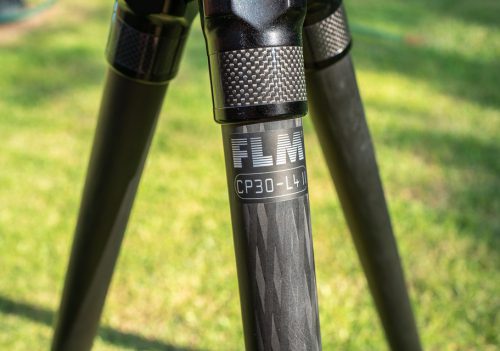
Just expanding on the build quality, it really is excellent. For something you use so often, this is really important and I find you end up using it more often and also enjoy using it just that little bit more. I think it’s even more impressive considering the price point of the FLM and I would say feels just as good as some of the much more expensive tripods you can buy. In this regard, the FLM offers good value for money (well… it’s all relative).
Overall Design
The FLM does away with the centre column you get on many tripods and given the height the tripod can reach, you won’t exactly be missing the centre column when it comes to extending the height.
The tube circumference is also a good size. This is the CP30 version (so a 30mm circumference) and feels about right. FLM does offer a CP34 (34mm) and CP38 (38mm) tube size to provide even more stability but they are more expensive and slightly heavier.
The branding blends quite well with the design and is not too obnoxious. It falls in line with other tripod brands out there. I would say the logo is looking slightly dated and could use a slight facelift to project a more modern look but honestly, this is nit-picking. A close competitor, Really Right Stuff, updated their logo and looks a lot better on their products in my opinion so maybe an opportunity for FLM in the future?
Sturdiness
One of the most important aspects of a tripod. I’m no expert when it comes to testing the overall stiffness of a tripod and all I can do is share my experience. I would say it is really sturdy especially considering how light and tall it is.
I would think you can get much more sturdy tripods out there but that obviously comes at the cost of increased weight and reduced height. For me, I wanted something that could perform well across all areas and something I could use every day and in all situations.
It has a maximum payload rating of 20kg which I can’t ever see myself fully utilising and it’s arguably overkill for my mirrorless camera. It does however show the confidence FLM has for this product.
Overall I would say this is a really sturdy tripod and I’ve not had any issues with blurry images (if I do, it’s probably down to me). Even at full height, it’s solid.
Height
This is probably one of the most impressive aspects of the FLM. When I first put it at full height, I couldn’t quite believe how tall it could go. Obviously, I knew the spec height but it’s another thing to actually see it.
The base plate extends just over my head and when you factor in the height of a ball head and the camera itself, it goes well above my head.
One particular advantage of having this height is when you’re on uneven terrain. It allows you to fully extend one leg to compensate for a slope without impacting the overall height of the tripod. Essentially it allows you to sill have a comfortable height to look through the viewfinder when you’re on a slope.
I wouldn’t say I use the full height often but is certainly nice to have for when you do need it, for example, shooting over a hedge or getting above the crowd when photographing the new year fireworks.
Twist Leg Locks
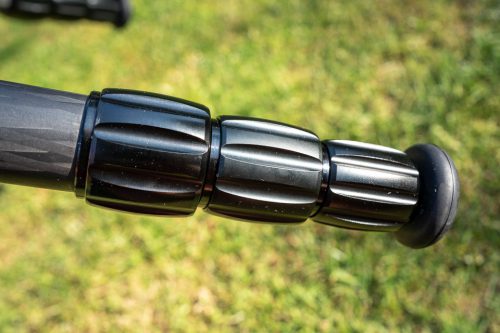
Not the preferred leg lock style for everyone and to be honest I was a bit hesitant but I think the operation is really nice to use and they’re easy to grip. You only have to give it a half turn to lock and unlock and I like the use of the aluminium here as opposed to a rubber cover you get on most other tripods.
I’ve read that having a rubber cover on the lock can wear over time and you need to replace this so the metal version is good to have. I suppose they can get a bit cold in the winter but that’s the only downside that I can see.
Angle selectors
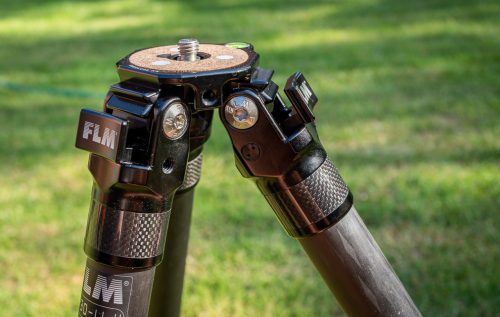
FLM utilise a ‘pull tab’ and a racket system to set the angle on the legs. It’s quite a simple system and works really well. Coming from my Manfrotto Befree, this is so much better and importantly a lot faster to use.
Feet
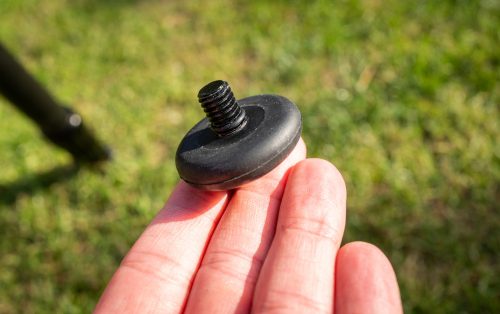
The feet are removable, using a stand 3/8” screw thread. This is standard across most tripods and you’ll easily find alternatives if the FLM feet are not to your liking.
The rubber feet are pretty standard and are in line with many other tripods. They work well, offering grip on a variety of surfaces and I’ve not had any issues using them. One thing to note is there is a rubber ring on the thread which prevents dirt, sand and water from finding its way further up the thread. This is a really nice touch in helping the longevity and durability of the product.
There are also spiked feet that come with the tripod, these are about 4cm long. I don’t use spiked feet very often but is nice to have nonetheless. Again, you can easily find alternative spikes to suit your preference.
Top Plate
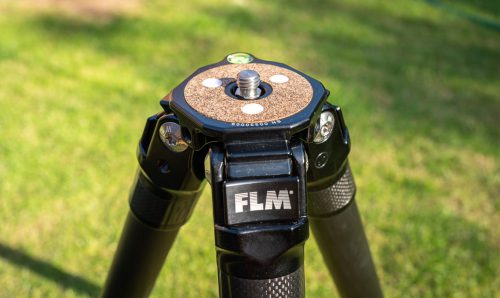
The top plate is 60mm in diameter which is a decent size and is able to accompany most tripod heads in the 20kg payload bracket the FLM is rated for.
FLM uses cork/rubber material here and I believe the reason is to reduce vibrations. I’ve not seen this from any other brand. One benefit I could see is that this will prevent scratches and marks when you screw the ball head on.
Also prevent scratches and marks is the lack of exposed metal screws fasting the plate to the legs which you see from many other brands. Instead, FLM uses either a different material for the screw or some kind of cover over a metal screw, I can’t quite tell which. Nonetheless, quite a nice touch.
Final Thoughts

Overall, I’ve really enjoyed using my FLM CP30 L4 II and is exactly what I was looking for. I certainly feel and I’m confident I’ll be using it for many years to come and, although expensive, I regard it as a good investment. More importantly, I feel like it’s improved my photography and I look forward to using it when I go out and about.
For me, after doing quite a bit of research, I couldn’t find a tripod out there that could match the FLM when you take into account all of these factors: price, height, weight, usability, build quality. It really is a good all-rounder and well suited for most situations.
Obviously, a lot of this is down to personal preference but if this is in your price bracket, I would strongly recommend the FLM CP30 L4 II.




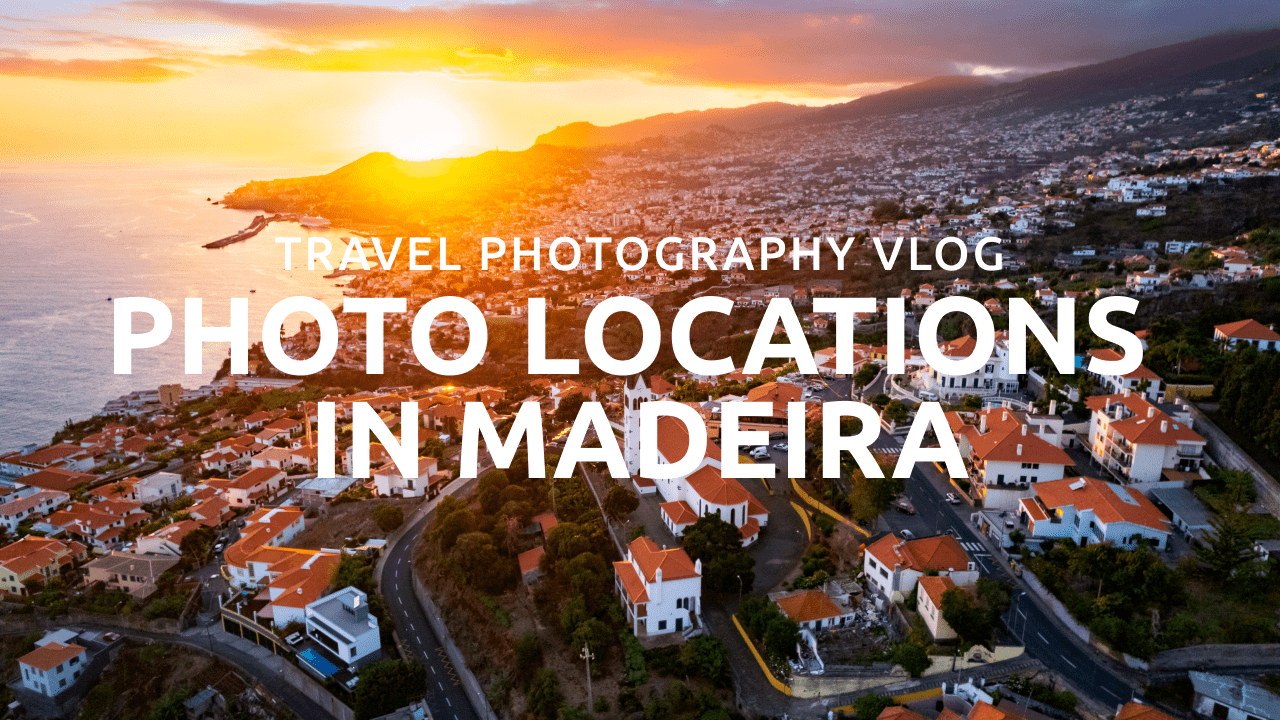
Dear Ollie, thank you for this great review of FLM CP-30 L4 II and also your lovely pictures, which I have viewed already.
Have a good day
Regards
Dirk
(FLM Head of Sales and Shipping)
Hello Ollie,
Thank you for your review of FLM CP-30 L4 II. I’m on the market for a new tripod and i’m on the fence between CP-30 and CP-34. I’d use it for hiking, landscape photography and light astro photography (4Kg of gears, ballheads included). Do you think the CP-30 will stand this load being still sturdy enough or should i look at the CP-34? (The CP-38 is too heavy and *cough* pricey for carrying it full day on backpack).
Thanks! Umberto
P.S. Should you correct the specs table, it states 1.5 Kg of load capacity.
Hi Umberto,
Thanks for getting in touch, I hope you found my review helpful. It sounds like the CP-30 would work perfectly – the load capacity is rated at 20kg. I’ve found it very sturdy for the equipment I use (roughly 1.5kg), particularly in windy conditions. It will depend on how ‘extended’ the tripod is (fully extended it’ll obviously be a bit less sturdy) – I very rarely have it fully extended. If you’re hiking, I would suggest the CP30 as well – I think the CP34 is 500g heavier vs the CP30. Let me know how you get on.
Ollie
Thanks for spreading this specific good content on your web-site. I came across it on the search engines. I will check back again when you post more aricles.
Thanks for the review! Curious what head you are using on it?
Hi John, I’m using the Acratech GXP Ballhead – Locking Lever Clamp – works / fits very well with the tripod in my opinion
Hi Ollie, I like your review and feel it is pretty accurate. I had similar criteria for a tripod and after a good deal of research went for the CB-38L4II model and a CB-58FT ball head. I am using up to an 800mm lens, the tripod hasn’t disappointed. I like the build quality, simplicity of design and specs. I did consider it good value compared to other high end tripods. I like the extra height for uneven ground etc. it seems rock solid.
Reading equipment reviews has been really useful for me getting back into photography after a very long break. So thanks.
Ian.
Can you purchase the tripod and head in the UK England
Hi Peter, you can purchase the Acratech head at Wex, Park Cameras, and I think ‘Bob Ridgby Photographic’ is the main UK distributor. Regarding FLM, I don’t believe there is a UK distributor anymore – I would suggest contacting FLM directly who will be able to advise.